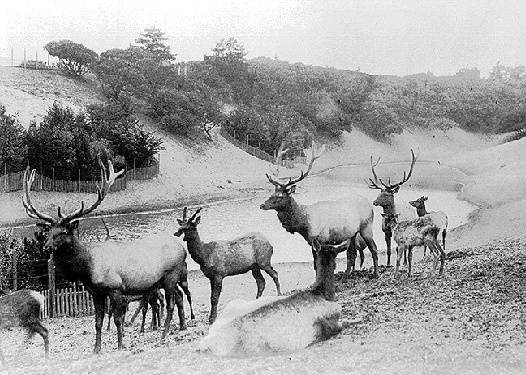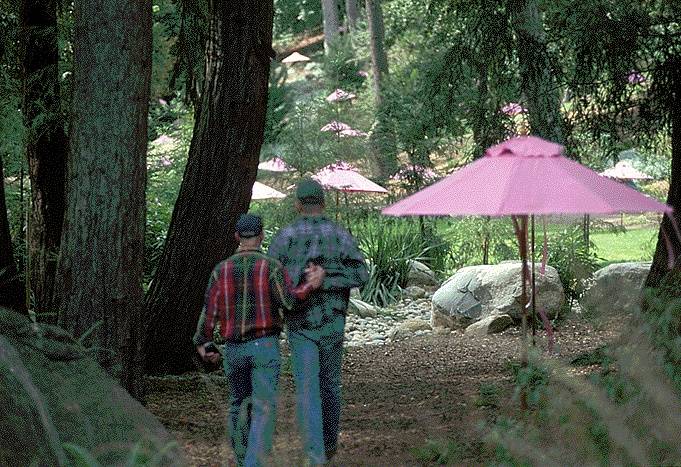Turning Sand Into Golden Gate Park: Difference between revisions
No edit summary |
(Changed credits from Greg Garr to Private Collection) |
||
| Line 5: | Line 5: | ||
'''1899: deer meander through what is today the AIDS memorial grove between Middle Drive and Bowling Green Drive.''' | '''1899: deer meander through what is today the AIDS memorial grove between Middle Drive and Bowling Green Drive.''' | ||
''Photo: | ''Photo: Private Collection, San Francisco, CA'' | ||
'''Q: What Does it Take to Turn a Sandy Wasteland into Paradise? ''' | '''Q: What Does it Take to Turn a Sandy Wasteland into Paradise? ''' | ||
Revision as of 14:12, 16 June 2014
Unfinished History
1899: deer meander through what is today the AIDS memorial grove between Middle Drive and Bowling Green Drive.
Photo: Private Collection, San Francisco, CA
Q: What Does it Take to Turn a Sandy Wasteland into Paradise?
A: Some Water, and a Whole Lot of Horseshit. More Weird Shit About Golden Gate Park.
Actually, it takes more than that ... brilliant planning and hard work round out the equation. When the idea of Golden Gate Park was first hatched, in the mid-1860's, the whole world scoffed: Everyone knew that the western half of San Francisco was an arid wasteland of barren sand dunes, upon which nothing could be made to grow. The Santa Rosa Press-Democrat, in 1873, wrote: "Of all the white elephants the city of San Francisco ever owned, they now own the largest in Golden Gate Park, a dreary waste of shifting sand hills where a blade of grass cannot be raised without four posts to keep it from blowing away..."
Fortunately, San Francisco ignored the conventional wisdom and set about the task of creating America's finest urban park. The two chief requirements were fertilizer and water; the latter was piped in and distributed with the help of the Dutch Windmill that still stands by the ocean near where John F. Kennedy Drive hits the Great Highway, while the former was provided in the form of the copious droppings generously bestowed upon the City's streets by the drays who were, until the 1920's, the mainstay of the local transportation system. Though no reliable estimate of the amount of horse-excrement collected for park fertilizer exists, the total undoubtedly ran into tens, even hundreds of thousands of tons -- nearly as much as went into the Warren Commission Report on the Assassination of President John F. Kennedy.
Despite its "natural" look, Golden Gate Park is a purely artificial paradise. One park gardener, asked to estimate how long the trees and plants would last if the irrigation were cut off, said "it'd be dunes again in ten or fifteen years ... though a few eucalyptus trees might survive." (And speaking of artificial paradises, Golden Gate Park has probably hosted more drug-induced mind-alterations per acre than any other patch of ground in the world.)
Mourners visit AIDS Memorial Grove, 1999
Photo: Rick Gerharter
A Rose is a Rose is a Rose ... Except When it's Not : The (Rarely Roseless) Rose Garden in Golden Gate Park
The best time to visit the Rose Garden is when there aren't any roses. Unfortunately, it's hard to find a season of the year when you won't run into the bloomin' things. May and June, peak rose season, are definitely out. Your best bet is midwinter. If you should chance upon that perfect late January day when every last thorn is revealed to the gray and drizzly sky in naked splendor, without so much as a bud to be seen, consider yourself blessed.
--Dr. Weirde


